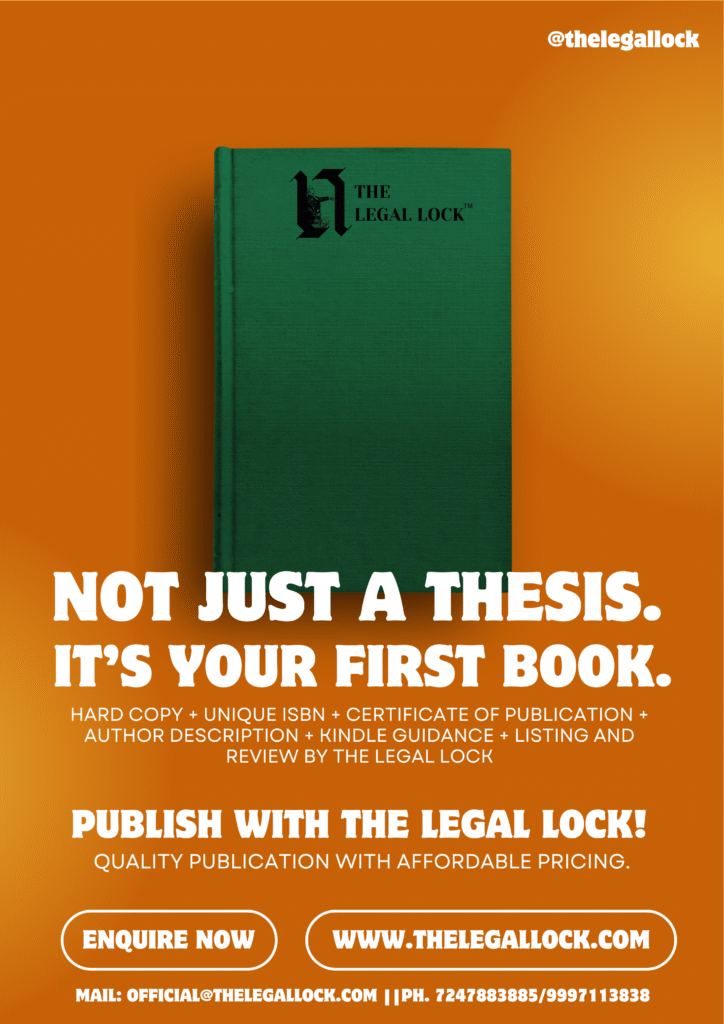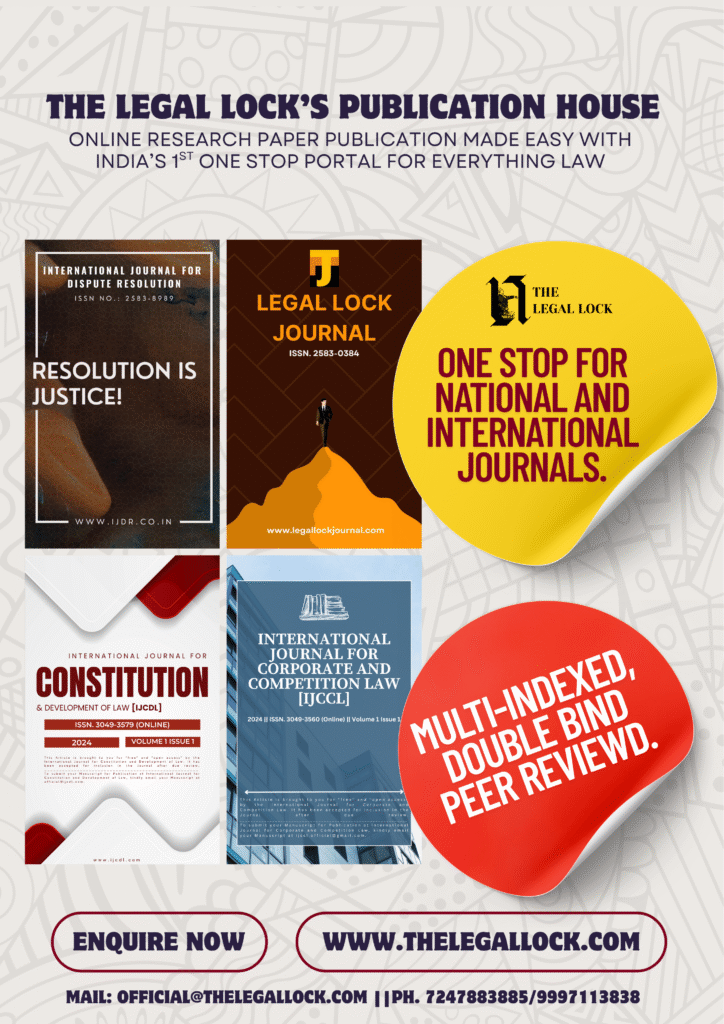Case Brief: P. Virudhachalam & Ors vs The Management Of Lotus Mills & Anr

| CASE NAME | P. Virudhachalam & Ors vs The Management Of Lotus Mills & Anr |
| CITATION | AIR 1998 SUPREME COURT 554 |
| COURT | The Supreme Court of India |
| BENCH | Justice S.B Majmudar, Justice M. Jagannadha Rao |
| PETITIONER | P. Virudhachalam & Ors |
| RESPONDENTS | The Management of Lotus Mills & Anr |
| DECIDED ON | Decided on December 9, 1997 |
INTRODUCTION
P. Virudhachalam & Ors vs The Management Of Lotus Mills & Anr
| CASE NAME | P. Virudhachalam & Ors vs The Management Of Lotus Mills & Anr |
| CITATION | AIR 1998 SUPREME COURT 554 |
| COURT | The Supreme Court of India |
| BENCH | Justice S.B Majmudar, Justice M. Jagannadha Rao |
| PETITIONER | P. Virudhachalam & Ors |
| RESPONDENTS | The Management of Lotus Mills & Anr |
| DECIDED ON | Decided on December 9, 1997 |
INTRODUCTION
This appeal, lodged with the Supreme Court via a certificate from the High Court of Judicature at Madras, raises a concise yet intriguing issue regarding the connection between an individual workman’s legal entitlement to compensation for lay-off as stipulated in “Section 25C of the Industrial Disputes Act, 1947 (the Act), and the binding nature of settlements achieved during conciliation under Section 12(3) of the Act. The key issue is whether a settlement of this kind, which seeks to restrict compensation for lay-off, can legally bind an individual employee who is not part of the union that agreed to the settlement, thereby diminishing their claim in light of Section 25C. The case concerns a period when Respondent No. 1 had shut down his textile mill due to financial difficulties and had laid off its workers, including the five appellants. A dispute emerged regarding lay-off compensation for the mentioned period. Conciliation proceedings took place, ultimately leading to a settlement in accordance with Section 12(3) of the Act”. While several unions representing the workmen accepted this settlement, the appellants’ union did not participate. The settlement included provisions for lay-off compensation payments that differed from the full compensation possible under the first proviso to Section 25C.
The appellants asserted their individual statutory entitlement under Section 25C and contended they were not bound by a settlement signed on behalf of their union, seeking full lay-off pay through applications under Section 33C(2) of the Act. Initially, the Labour Court ruled in favor of the workmen. However, upon a writ petition from the management, the High Court overturned the Labour Court’s decision. The High Court determined that the settlement under Section 12(3) was binding on all workmen, including the appellants, due to Section 18(3) of the Act. This appeal challenges the High Court’s ruling, necessitating an examination of the statutory framework of the Industrial Disputes Act concerning settlements, collective bargaining, and individual rights, particularly regarding lay-off compensation. This case’s ruling is significant for establishing the scope of individual rights in relation to collective agreements in industrial relations under the Act.
FACTS
This appeal is based on the material facts involving “five appellants who were permanent workmen at a textile mill owned by Respondent No. 1. Due to a financial crisis, the mill had to close and lay off workers from August 8, 1976, until January 31, 1978. During this period, as workmen were being laid off, a dispute emerged regarding the entitlement of these workers to lay-off compensation.
During conciliation proceedings, a settlement was reached on February 28, 1977, involving five unions of the workmen. It stipulated that lay-off compensation for “no work” days would be paid in instalments after January 1981. In January 1980, workers’ insistence on immediate payment led to a new dispute, causing this settlement to lose its effectiveness.
Subsequently, additional conciliation proceedings took place, involving various unions representing different categories of workers, along with the union representing the current appellants. As a result, a new settlement was established under Section 12(3) of the Act on May 5, 1980. This settlement was signed by four out of the five unions representing the workmen, with the union representing the appellants not signing it. With respect to lay-off compensation, the terms of this settlement stipulated that payments would be made for the first 45 days of lay-off during the periods from August 8, 1976, to August 7, 1977, and from August 9, 1977, to January 31, 1978. For days of lay-off occurring after the first forty-five days in each period, compensation was not payable. Furthermore, an ex-gratia payment was arranged, such that the total of the lay-off compensation and the ex-gratia payment would amount to 67% of the sum of the lay-off compensation due under Section 25C for all days of lay-off during that period.
The appellants, eligible for the settlement provisions despite their union not signing it, submitted applications under Section 33C(2) of the Act. They contended that, even without a collective agreement to limit their lay-off compensation entitlement, they should receive 50% compensation for the entire lay-off period from August 8, 1976, to January 31, 1978, in accordance with Section 25C. Additionally, they argued that the settlement cap of a maximum of 67% total statutory compensation did not apply to them. The Labour Court approved their applications, but the Madras High Court annulled this decision in a writ petition from the management. The High Court ruled that the Section 12(3) settlement was binding on all workmen, including the appellants, as per Section 18(3) of the Act”. Thus, the current appeal came into being.
ISSUE RAISED
- Whether a settlement achieved during conciliation under “Section 12(3) of the Industrial Disputes Act, 1947”, is binding for individual workmen who are not part of the unions involved in the settlement.
- Whether the “such agreement between the employer and the workman” mentioned in the first proviso to “Section 25C(1) of the Act”, which restricts lay-off compensation for periods exceeding forty-five days, must be a personal agreement with each individual workman or can be a collective agreement as outlined in a settlement under Section 18(3).
- Whether the provision in “Section 25J of the Act, which gives overriding effect to Chapter VA (including Section 25C) over inconsistencies in “any other law,” renders a settlement under Section 12(3) and Section 18(3) non-operative or not binding on individual workmen claiming full lay-off compensation under Section 25C”.
- Whether a workman can seek statutory benefits, regardless of and contrary to a binding settlement reached through collective bargaining, in cases where collective bargaining is the cornerstone of the Industrial Disputes Act, even if their union did not sign the settlement.
PETITIONER’S ARGUMENTS
The counsel representing the appellants, who were trained for this role, argued vigorously that “Section 25C of the Industrial Disputes Act, 1947 (which is included in Chapter VA) constitutes a self-contained code regarding lay-off compensation. They contended that the statutory right to receive 50% lay-off pay for the entire duration of the lay-off, as granted by Section 25C, can only be diminished or limited by a definitive contract between the relevant workman and employer, as stated in the first proviso to Section 25C(1).
The lawyer representing the appellants contended that for the proviso to Section 25C(1) to be applicable, it must be demonstrated that the individual workman, who benefits from this statutory right, has voluntarily agreed to forfeit or limit that right by entering into a contract with the employer. They argued that this type of settlement is distinct and independent from any agreements made during conciliation under Section 12(3) of the Act, even if it is binding according to Section 18(3).
Section 25J of the Act was relied upon, which states that the provisions of Chapter VA will have effect regardless of anything inconsistent in “any other law.” The appellants’ counsel interpreted “any other law” to encompass additional provisions within the Industrial Disputes Act, specifically Section 18 concerning the binding nature of settlements. Their reasoning was that any inconsistency between Section 25C (which guarantees complete compensation) and Section 18(3) (which makes a settlement reducing compensation binding) must be resolved in favor of Section 25C due to the overriding effect of Section 25J.
The appellants argued that since they had not entered into any personal contract with the management to limit their rights under Section 25C, they were entitled to a payment of 50% statutory compensation for the entire lay-off period. They further asserted that the May 5, 1980 settlement, which set a cap on compensation, did not apply to them because their union had not signed it. Their argument was that the High Court had erred in determining that the settlement was binding on them under Section 18(3) and in rejecting their claim under Section 33C(2)”.
RESPONDENT’S ARGUMENTS
Respondent No. 1, the management of the textile factory, did not appear for the proceedings in the Supreme Court. Nonetheless, as can be seen from the High Court’s ruling in their favor, their arguments was based on the binding nature of the agreement reached during conciliation proceedings under Section 12(3) of the Act.
The respondent’s position, which was confirmed by the High Court, was that a settlement reached during conciliation proceedings under “Section 12(3) has a broad binding effect as per Section 18(3) of the Act. It is clearly stated in Section 18(3) that the settlement is binding on “all parties to the industrial dispute” and, even more importantly, on “all persons who were employed in the establishment” concerning the dispute on the date it occurred and all individuals who later became employed. The appellants argued that the disagreement over lay-off compensation constituted an industrial dispute involving all workmen, including themselves, and therefore the settlement was legally binding on them under Section 18(3), irrespective of whether their specific union had endorsed the settlement.
Moreover, the respondent contended that the settlement from May 5, 1980, comprised an “agreement” for lay-off compensation payments, but only at a capped rate (67% of the total statutory compensation). Their argument was that an overall agreement of this kind, established in the binding agreement, meets the criterion of an “agreement to that effect between the workman and the employer” mentioned in the first proviso to Section 25C(1). In the context of an industrial dispute and collective bargaining, the term “workman” in the proviso should be understood to refer to the collective group of workmen represented by their unions in a binding settlement.
The respondent disputed the appellants’ interpretation of Section 25J by arguing that “any other law” in Section 25J(1) refers to laws other than the Industrial Disputes Act itself. Their argument was that Section 25J does not create a contradiction between Section 25C and Section 18(3) within the same Act, and therefore the binding nature of Section 18(3) on settlements continues to apply to claims under Section 25C. They argued that the High Court correctly determined that the appellants were estopped by the terms of the Section 12(3) settlement from asserting their claim for lay-off compensation under Section 25C”.
JUDGEMENT
The Supreme Court, after reviewing the statutory provisions of the “Industrial Disputes Act—particularly Sections 2(p), 12, 18, 25C, and 25J—and considering the submissions made, determined that the settlement achieved during conciliation under Section 12(3) was binding on the appellants as per Section 18(3), despite their union not having signed it”. The Court emphasized that the Act adheres to the principle of collective bargaining, where unions serve as the accredited representatives of workers in resolving industrial disputes. In conciliation proceedings, a settlement is elevated to a high platform and is binding not only on the signatories but also on all parties involved in the industrial dispute, including the entire group of workers.
The Court rejected the appellants’ claim that the “agreement” referred to in the first proviso to Section 25C(1) ought to be a personal agreement between the workman and the employer. It held the position that an agreement to limit lay-off compensation claims exceeding 45 days can be established between the workmen and the employer through their authorized representatives, and this agreement can be included in a binding settlement as outlined in Section 12(3) in conjunction with Section 18(3). The Court reasoned that the binding effect of a collective agreement in a conciliation settlement is “telescoped” into the first proviso of Section 25C(1), thereby binding all workmen involved in the industrial dispute, including those whose union did not sign the settlement.
Additionally, “the Supreme Court settled arguments that were based on Section 25J. It clarified that Section 25J grants Chapter VA an overriding effect only when there are inconsistencies with “any other law” (i.e., laws apart from the Industrial Disputes Act itself) or standing orders, awards, contracts of service, etc. The Court determined that Section 25J does not establish that the provisions of Chapter VA are to be applied regardless of any inconsistent provisions in other chapters of the Industrial Disputes Act. Consequently, Section 25J does not create a conflict between Section 25C and Section 18(3), thereby preserving the binding effect of Section 18(3) on settlements”.
The Court thus decided that the appellants were bound by the settlement of May 5, 1980. Since the settlement involved a commitment to pay lay-off compensation of 67% of the total statutory compensation, this commitment fulfilled the criteria set by the first proviso to Section 25C(1) and served to limit the appellants’ claim for lay-off compensation. The Court endorsed the High Court’s ruling, identifying no mistake in its determination that the appellants were obligated to adhere to the settlement terms.
CONCLUSION
The judgment of the Supreme Court in this appeal provides a definitive interpretation of how individual statutory rights and collective settlements under the Industrial Disputes Act, 1947 interact, particularly regarding lay-off compensation. It has been conclusively established by the case that collective bargaining prevails and that settlements reached during conciliation proceedings under Section 12(3) read with Section 18(3) of the Act have an extensive binding effect. The Court’s ruling clarifies that such settlements are binding for all workmen involved in the industrial dispute, regardless of their individual union membership or whether their union signed the settlement.
A crucial element of the ruling is how it interprets the “agreement” mentioned in the first proviso to Section 25C(1). The Court has clarified that this agreement is not limited to individual arrangements between the employer and a workman; it can also encompass a collective agreement established in a binding settlement reached through collective bargaining. This interpretation aligns with the fundamental framework of the Act, which promotes collective resolution of industrial disputes as the preferred means to achieve industrial peace.
Secondly, the ruling clarifies how far-reaching Section 25J is. For the Court’s conclusion, “it is important that its overriding effect applies only to inconsistencies between laws other than the Industrial Disputes Act itself. This means that the provisions of different chapters of the ID Act, such as Section 18(3) concerning binding settlements and Section 25C regarding lay-off compensation, should be interpreted in a way that reconciles them with each other. Thus, the binding effect of a valid settlement under Section 18(3) is not negated by Section 25J”.
The Supreme Court has reaffirmed the policy that in collective industrial disputes, the collective interest represented by the bargaining agent (the union) and the agreement reached through statutory mechanisms takes precedence over individual claims that conflict with the terms of the agreement, by maintaining the binding nature of the conciliation agreement on appellants despite their union’s lack of signature. This case serves as a significant precedent, emphasizing that settlements reached during conciliation are valid and sacred, representing a crucial means of achieving industrial harmony and resolving disputes comprehensively. It binds all involved workers. The key issue is whether a settlement of this kind, which seeks to restrict compensation for lay-off, can legally bind an individual employee who is not part of the union that agreed to the settlement, thereby diminishing their claim in light of Section 25C. The case concerns a period when Respondent No. 1 had shut down his textile mill due to financial difficulties and had laid off its workers, including the five appellants. A dispute emerged regarding lay-off compensation for the mentioned period. Conciliation proceedings took place, ultimately leading to a settlement in accordance with Section 12(3) of the Act”. While several unions representing the workmen accepted this settlement, the appellants’ union did not participate. The settlement included provisions for lay-off compensation payments that differed from the full compensation possible under the first proviso to Section 25C.
The appellants asserted their individual statutory entitlement under Section 25C and contended they were not bound by a settlement signed on behalf of their union, seeking full lay-off pay through applications under Section 33C(2) of the Act. Initially, the Labour Court ruled in favor of the workmen. However, upon a writ petition from the management, the High Court overturned the Labour Court’s decision. The High Court determined that the settlement under Section 12(3) was binding on all workmen, including the appellants, due to Section 18(3) of the Act. This appeal challenges the High Court’s ruling, necessitating an examination of the statutory framework of the Industrial Disputes Act concerning settlements, collective bargaining, and individual rights, particularly regarding lay-off compensation. This case’s ruling is significant for establishing the scope of individual rights in relation to collective agreements in industrial relations under the Act.
FACTS
This appeal is based on the material facts involving “five appellants who were permanent workmen at a textile mill owned by Respondent No. 1. Due to a financial crisis, the mill had to close and lay off workers from August 8, 1976, until January 31, 1978. During this period, as workmen were being laid off, a dispute emerged regarding the entitlement of these workers to lay-off compensation.
During conciliation proceedings, a settlement was reached on February 28, 1977, involving five unions of the workmen. It stipulated that lay-off compensation for “no work” days would be paid in instalments after January 1981. In January 1980, workers’ insistence on immediate payment led to a new dispute, causing this settlement to lose its effectiveness.
Subsequently, additional conciliation proceedings took place, involving various unions representing different categories of workers, along with the union representing the current appellants. As a result, a new settlement was established under Section 12(3) of the Act on May 5, 1980. This settlement was signed by four out of the five unions representing the workmen, with the union representing the appellants not signing it. With respect to lay-off compensation, the terms of this settlement stipulated that payments would be made for the first 45 days of lay-off during the periods from August 8, 1976, to August 7, 1977, and from August 9, 1977, to January 31, 1978. For days of lay-off occurring after the first forty-five days in each period, compensation was not payable. Furthermore, an ex-gratia payment was arranged, such that the total of the lay-off compensation and the ex-gratia payment would amount to 67% of the sum of the lay-off compensation due under Section 25C for all days of lay-off during that period.
The appellants, eligible for the settlement provisions despite their union not signing it, submitted applications under Section 33C(2) of the Act. They contended that, even without a collective agreement to limit their lay-off compensation entitlement, they should receive 50% compensation for the entire lay-off period from August 8, 1976, to January 31, 1978, in accordance with Section 25C. Additionally, they argued that the settlement cap of a maximum of 67% total statutory compensation did not apply to them. The Labour Court approved their applications, but the Madras High Court annulled this decision in a writ petition from the management. The High Court ruled that the Section 12(3) settlement was binding on all workmen, including the appellants, as per Section 18(3) of the Act”. Thus, the current appeal came into being.
ISSUE RAISED
- Whether a settlement achieved during conciliation under “Section 12(3) of the Industrial Disputes Act, 1947”, is binding for individual workmen who are not part of the unions involved in the settlement.
- Whether the “such agreement between the employer and the workman” mentioned in the first proviso to “Section 25C(1) of the Act”, which restricts lay-off compensation for periods exceeding forty-five days, must be a personal agreement with each individual workman or can be a collective agreement as outlined in a settlement under Section 18(3).
- Whether the provision in “Section 25J of the Act, which gives overriding effect to Chapter VA (including Section 25C) over inconsistencies in “any other law,” renders a settlement under Section 12(3) and Section 18(3) non-operative or not binding on individual workmen claiming full lay-off compensation under Section 25C”.
- Whether a workman can seek statutory benefits, regardless of and contrary to a binding settlement reached through collective bargaining, in cases where collective bargaining is the cornerstone of the Industrial Disputes Act, even if their union did not sign the settlement.
PETITIONER’S ARGUMENTS
The counsel representing the appellants, who were trained for this role, argued vigorously that “Section 25C of the Industrial Disputes Act, 1947 (which is included in Chapter VA) constitutes a self-contained code regarding lay-off compensation. They contended that the statutory right to receive 50% lay-off pay for the entire duration of the lay-off, as granted by Section 25C, can only be diminished or limited by a definitive contract between the relevant workman and employer, as stated in the first proviso to Section 25C(1).
The lawyer representing the appellants contended that for the proviso to Section 25C(1) to be applicable, it must be demonstrated that the individual workman, who benefits from this statutory right, has voluntarily agreed to forfeit or limit that right by entering into a contract with the employer. They argued that this type of settlement is distinct and independent from any agreements made during conciliation under Section 12(3) of the Act, even if it is binding according to Section 18(3).
Section 25J of the Act was relied upon, which states that the provisions of Chapter VA will have effect regardless of anything inconsistent in “any other law.” The appellants’ counsel interpreted “any other law” to encompass additional provisions within the Industrial Disputes Act, specifically Section 18 concerning the binding nature of settlements. Their reasoning was that any inconsistency between Section 25C (which guarantees complete compensation) and Section 18(3) (which makes a settlement reducing compensation binding) must be resolved in favor of Section 25C due to the overriding effect of Section 25J.
The appellants argued that since they had not entered into any personal contract with the management to limit their rights under Section 25C, they were entitled to a payment of 50% statutory compensation for the entire lay-off period. They further asserted that the May 5, 1980 settlement, which set a cap on compensation, did not apply to them because their union had not signed it. Their argument was that the High Court had erred in determining that the settlement was binding on them under Section 18(3) and in rejecting their claim under Section 33C(2)”.
RESPONDENT’S ARGUMENTS
Respondent No. 1, the management of the textile factory, did not appear for the proceedings in the Supreme Court. Nonetheless, as can be seen from the High Court’s ruling in their favor, their arguments was based on the binding nature of the agreement reached during conciliation proceedings under Section 12(3) of the Act.
The respondent’s position, which was confirmed by the High Court, was that a settlement reached during conciliation proceedings under “Section 12(3) has a broad binding effect as per Section 18(3) of the Act. It is clearly stated in Section 18(3) that the settlement is binding on “all parties to the industrial dispute” and, even more importantly, on “all persons who were employed in the establishment” concerning the dispute on the date it occurred and all individuals who later became employed. The appellants argued that the disagreement over lay-off compensation constituted an industrial dispute involving all workmen, including themselves, and therefore the settlement was legally binding on them under Section 18(3), irrespective of whether their specific union had endorsed the settlement.
Moreover, the respondent contended that the settlement from May 5, 1980, comprised an “agreement” for lay-off compensation payments, but only at a capped rate (67% of the total statutory compensation). Their argument was that an overall agreement of this kind, established in the binding agreement, meets the criterion of an “agreement to that effect between the workman and the employer” mentioned in the first proviso to Section 25C(1). In the context of an industrial dispute and collective bargaining, the term “workman” in the proviso should be understood to refer to the collective group of workmen represented by their unions in a binding settlement.
The respondent disputed the appellants’ interpretation of Section 25J by arguing that “any other law” in Section 25J(1) refers to laws other than the Industrial Disputes Act itself. Their argument was that Section 25J does not create a contradiction between Section 25C and Section 18(3) within the same Act, and therefore the binding nature of Section 18(3) on settlements continues to apply to claims under Section 25C. They argued that the High Court correctly determined that the appellants were estopped by the terms of the Section 12(3) settlement from asserting their claim for lay-off compensation under Section 25C”.
JUDGEMENT
The Supreme Court, after reviewing the statutory provisions of the “Industrial Disputes Act—particularly Sections 2(p), 12, 18, 25C, and 25J—and considering the submissions made, determined that the settlement achieved during conciliation under Section 12(3) was binding on the appellants as per Section 18(3), despite their union not having signed it”. The Court emphasized that the Act adheres to the principle of collective bargaining, where unions serve as the accredited representatives of workers in resolving industrial disputes. In conciliation proceedings, a settlement is elevated to a high platform and is binding not only on the signatories but also on all parties involved in the industrial dispute, including the entire group of workers.
The Court rejected the appellants’ claim that the “agreement” referred to in the first proviso to Section 25C(1) ought to be a personal agreement between the workman and the employer. It held the position that an agreement to limit lay-off compensation claims exceeding 45 days can be established between the workmen and the employer through their authorized representatives, and this agreement can be included in a binding settlement as outlined in Section 12(3) in conjunction with Section 18(3). The Court reasoned that the binding effect of a collective agreement in a conciliation settlement is “telescoped” into the first proviso of Section 25C(1), thereby binding all workmen involved in the industrial dispute, including those whose union did not sign the settlement.
Additionally, “the Supreme Court settled arguments that were based on Section 25J. It clarified that Section 25J grants Chapter VA an overriding effect only when there are inconsistencies with “any other law” (i.e., laws apart from the Industrial Disputes Act itself) or standing orders, awards, contracts of service, etc. The Court determined that Section 25J does not establish that the provisions of Chapter VA are to be applied regardless of any inconsistent provisions in other chapters of the Industrial Disputes Act. Consequently, Section 25J does not create a conflict between Section 25C and Section 18(3), thereby preserving the binding effect of Section 18(3) on settlements”.
The Court thus decided that the appellants were bound by the settlement of May 5, 1980. Since the settlement involved a commitment to pay lay-off compensation of 67% of the total statutory compensation, this commitment fulfilled the criteria set by the first proviso to Section 25C(1) and served to limit the appellants’ claim for lay-off compensation. The Court endorsed the High Court’s ruling, identifying no mistake in its determination that the appellants were obligated to adhere to the settlement terms.
CONCLUSION
The judgment of the Supreme Court in this appeal provides a definitive interpretation of how individual statutory rights and collective settlements under the Industrial Disputes Act, 1947 interact, particularly regarding lay-off compensation. It has been conclusively established by the case that collective bargaining prevails and that settlements reached during conciliation proceedings under Section 12(3) read with Section 18(3) of the Act have an extensive binding effect. The Court’s ruling clarifies that such settlements are binding for all workmen involved in the industrial dispute, regardless of their individual union membership or whether their union signed the settlement.
A crucial element of the ruling is how it interprets the “agreement” mentioned in the first proviso to Section 25C(1). The Court has clarified that this agreement is not limited to individual arrangements between the employer and a workman; it can also encompass a collective agreement established in a binding settlement reached through collective bargaining. This interpretation aligns with the fundamental framework of the Act, which promotes collective resolution of industrial disputes as the preferred means to achieve industrial peace.
Secondly, the ruling clarifies how far-reaching Section 25J is. For the Court’s conclusion, “it is important that its overriding effect applies only to inconsistencies between laws other than the Industrial Disputes Act itself. This means that the provisions of different chapters of the ID Act, such as Section 18(3) concerning binding settlements and Section 25C regarding lay-off compensation, should be interpreted in a way that reconciles them with each other. Thus, the binding effect of a valid settlement under Section 18(3) is not negated by Section 25J”.
The Supreme Court has reaffirmed the policy that in collective industrial disputes, the collective interest represented by the bargaining agent (the union) and the agreement reached through statutory mechanisms takes precedence over individual claims that conflict with the terms of the agreement, by maintaining the binding nature of the conciliation agreement on appellants despite their union’s lack of signature. This case serves as a significant precedent, emphasizing that settlements reached during conciliation are valid and sacred, representing a crucial means of achieving industrial harmony and resolving disputes comprehensively. It binds all involved workers.







